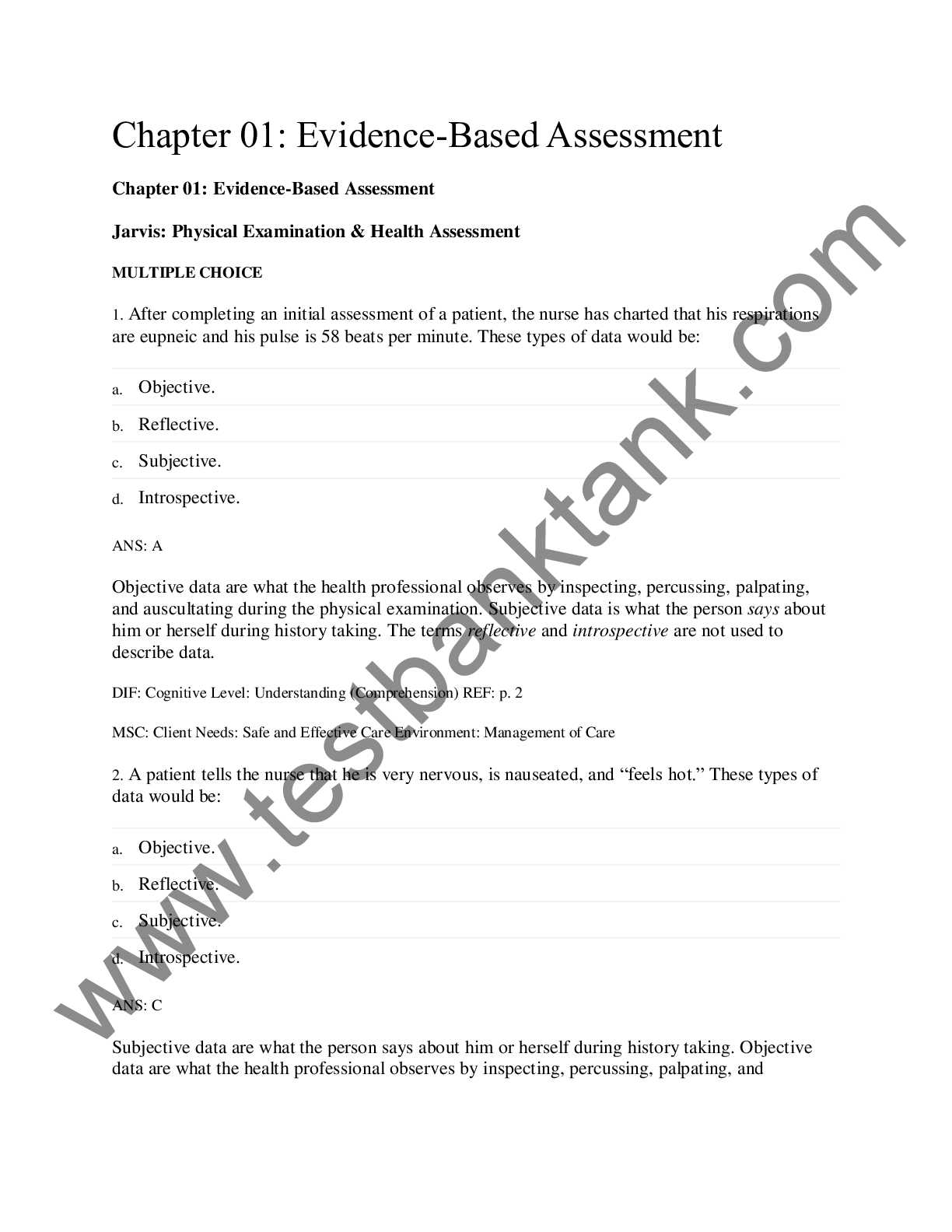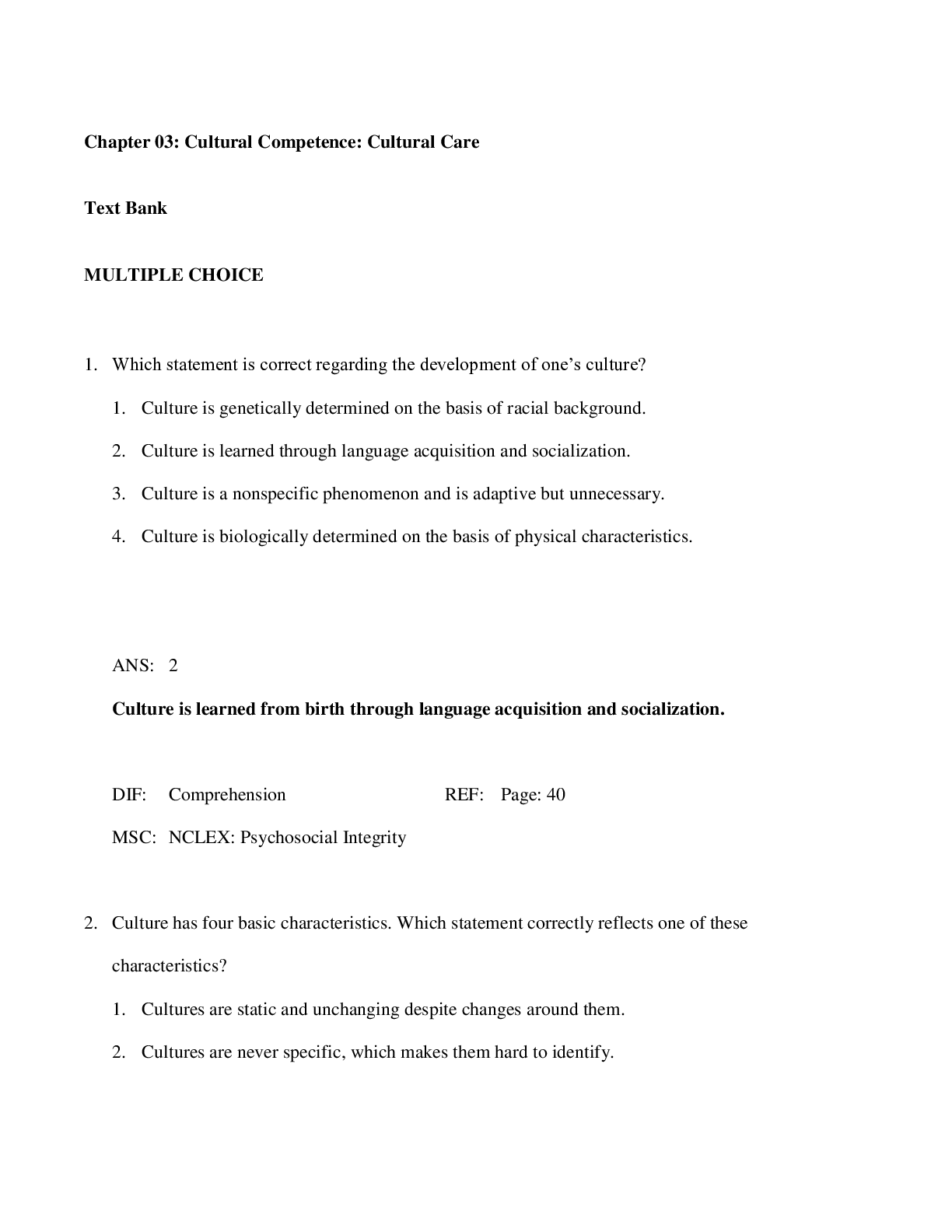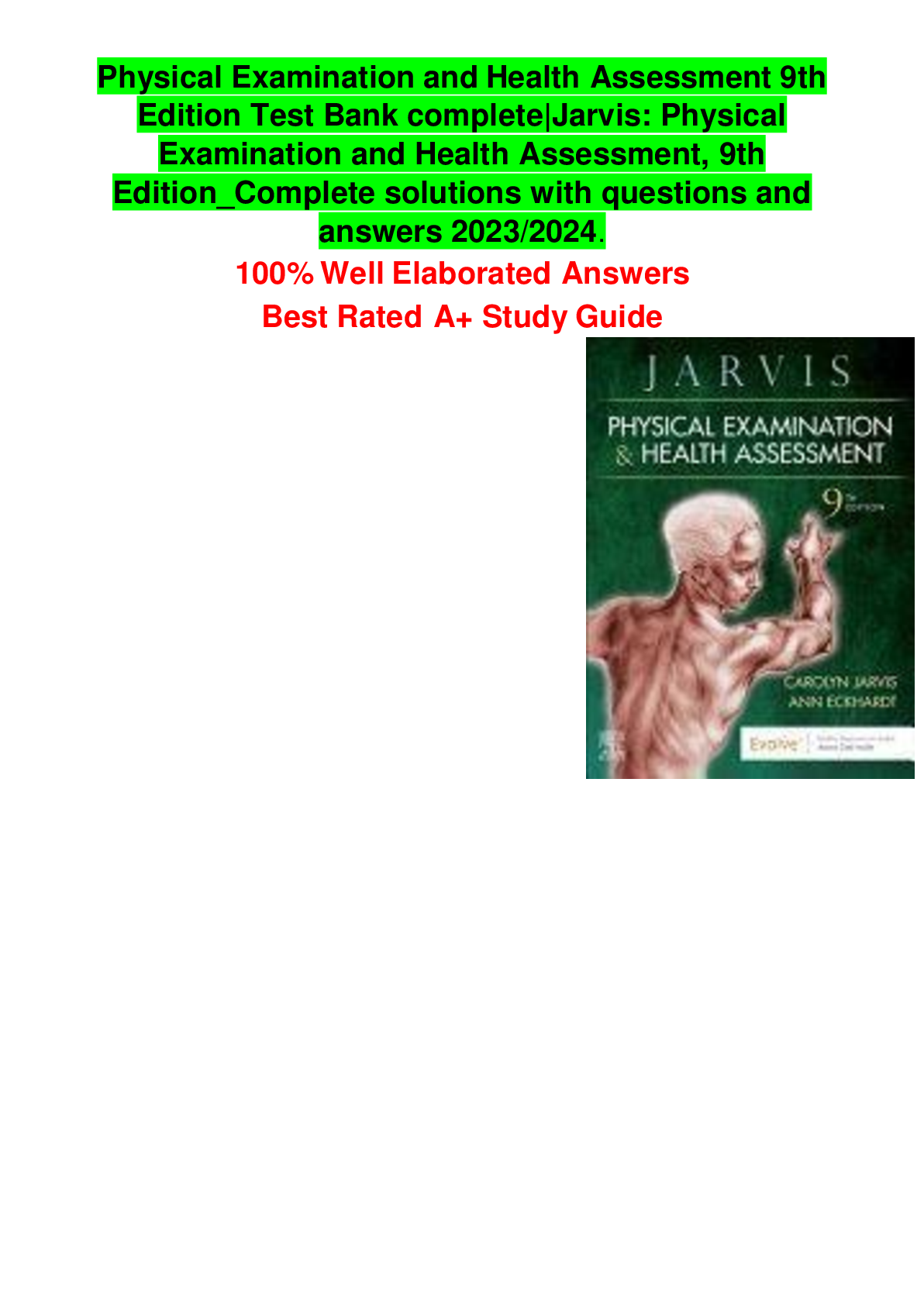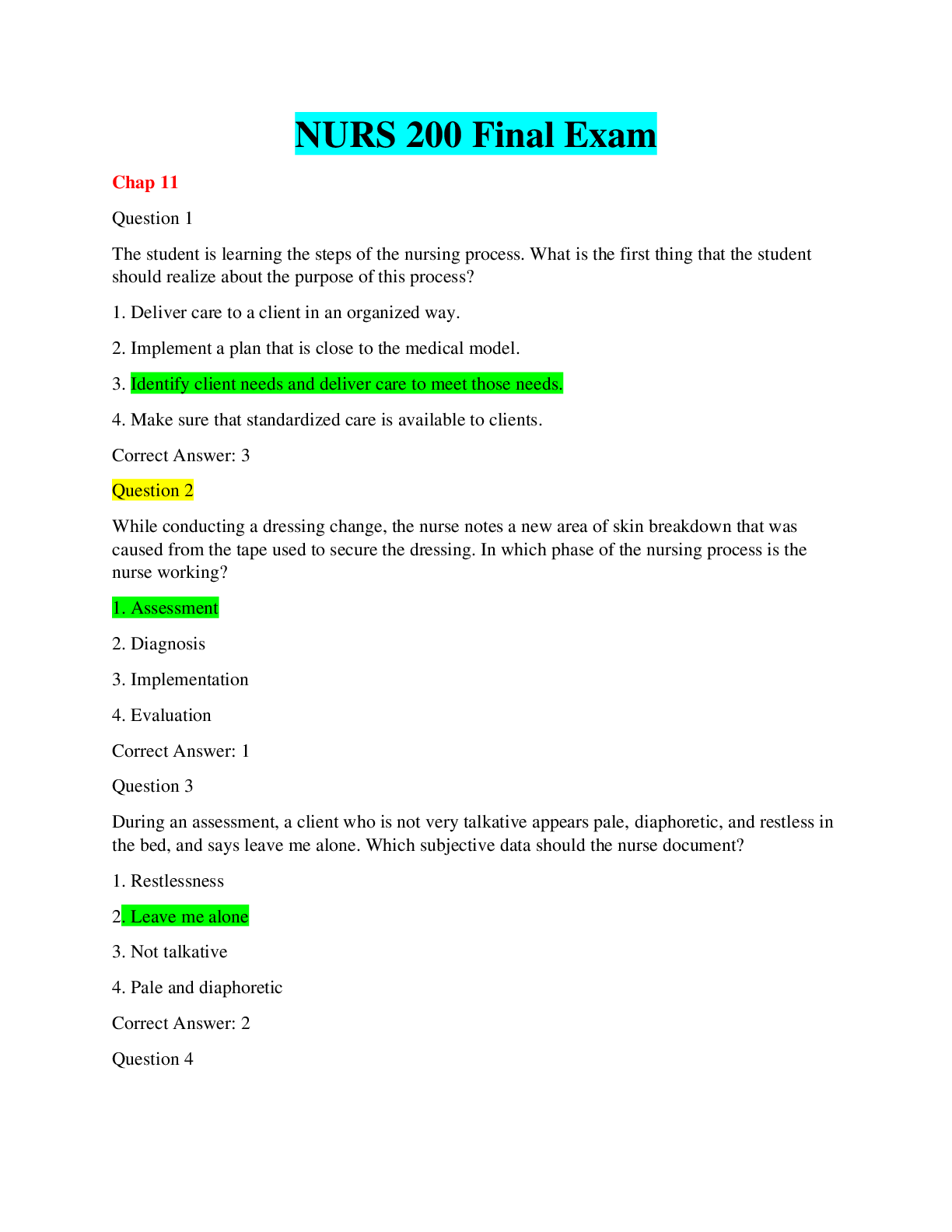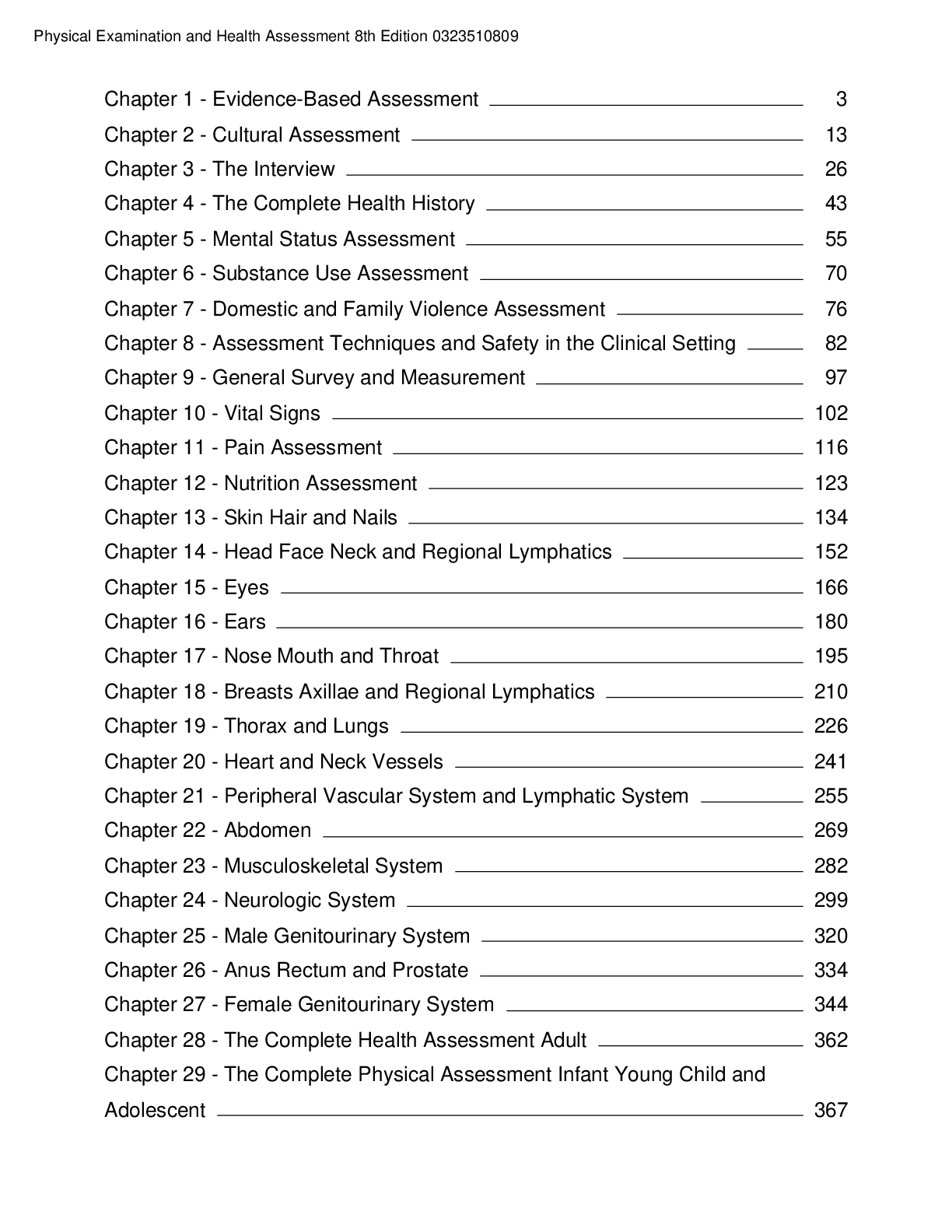*NURSING > QUESTIONS & ANSWERS > Physical Examination and Health Assessment 8e - questions and answers (All)
Physical Examination and Health Assessment 8e - questions and answers
Document Content and Description Below
1. After completing an initial assessment of a patient, the nurse has charted that his respirations are eupneic and his pulse is 58 beats per minute. These types of data would be: a. Objective. b. ... Reflective. c. Subjective. d. Introspective. 2. A patient tells the nurse that he is very nervous, is nauseated, and feels hot. These types of data would be: a. Objective. b. Reflective. c. Subjective. d. Introspective. 3. The patients record, laboratory studies, objective data, and subjective data combine to form the: a. Data base. b. Admitting data. Test Bank - Physical Examination and Health Assessment 8e (by Jarvis) 2 c. Financial statement. d. Discharge summary. 4. When listening to a patients breath sounds, the nurse is unsure of a sound that is heard. The nurses next action should be to: a. Immediately notify the patients physician. b. Document the sound exactly as it was heard. c. Validate the data by asking a coworker to listen to the breath sounds. d. Assess again in 20 minutes to note whether the sound is still present. 5. The nurse is conducting a class for new graduate nurses. During the teaching session, the nurse should keep in mind that novice nurses, without a background of skills and experience from which to draw, are more likely to make their decisions using: a. Intuition. b. A set of rules. c. Articles in journals. d. Advice from supervisors. 6. Expert nurses learn to attend to a pattern of assessment data and act without consciously labeling it. These responses are referred to as: a. Intuition. b. The nursing process. c. Clinical knowledge. d. Diagnostic reasoning. 7. The nurse is reviewing information about evidence-based practice (EBP). Which statement best reflects EBP? a. EBP relies on tradition for support of best practices. b. EBP is simply the use of best practice techniques for the treatment of patients. c. EBP emphasizes the use of best evidence with the clinicians experience. d. The patients own preferences are not important with EBP. 8. The nurse is conducting a class on priority setting for a group of new graduate nurses. Which is an example of a first-level priority problem? a. Patient with postoperative pain b. Newly diagnosed patient with diabetes who needs diabetic teaching Test Bank - Physical Examination and Health Assessment 8e (by Jarvis) 4 c. Individual with a small laceration on the sole of the foot d. Individual with shortness of breath and respiratory distress 9. When considering priority setting of problems, the nurse keeps in mind that second-level priority problems include which of these aspects? a. Low self-esteem b. Lack of knowledge c. Abnormal laboratory values d. Severely abnormal vital signs 10. Which critical thinking skill helps the nurse see relationships among the data? a. Validation b. Clustering related cues c. Identifying gaps in data d. Distinguishing relevant from irrelevant [Show More]
Last updated: 1 year ago
Preview 1 out of 476 pages
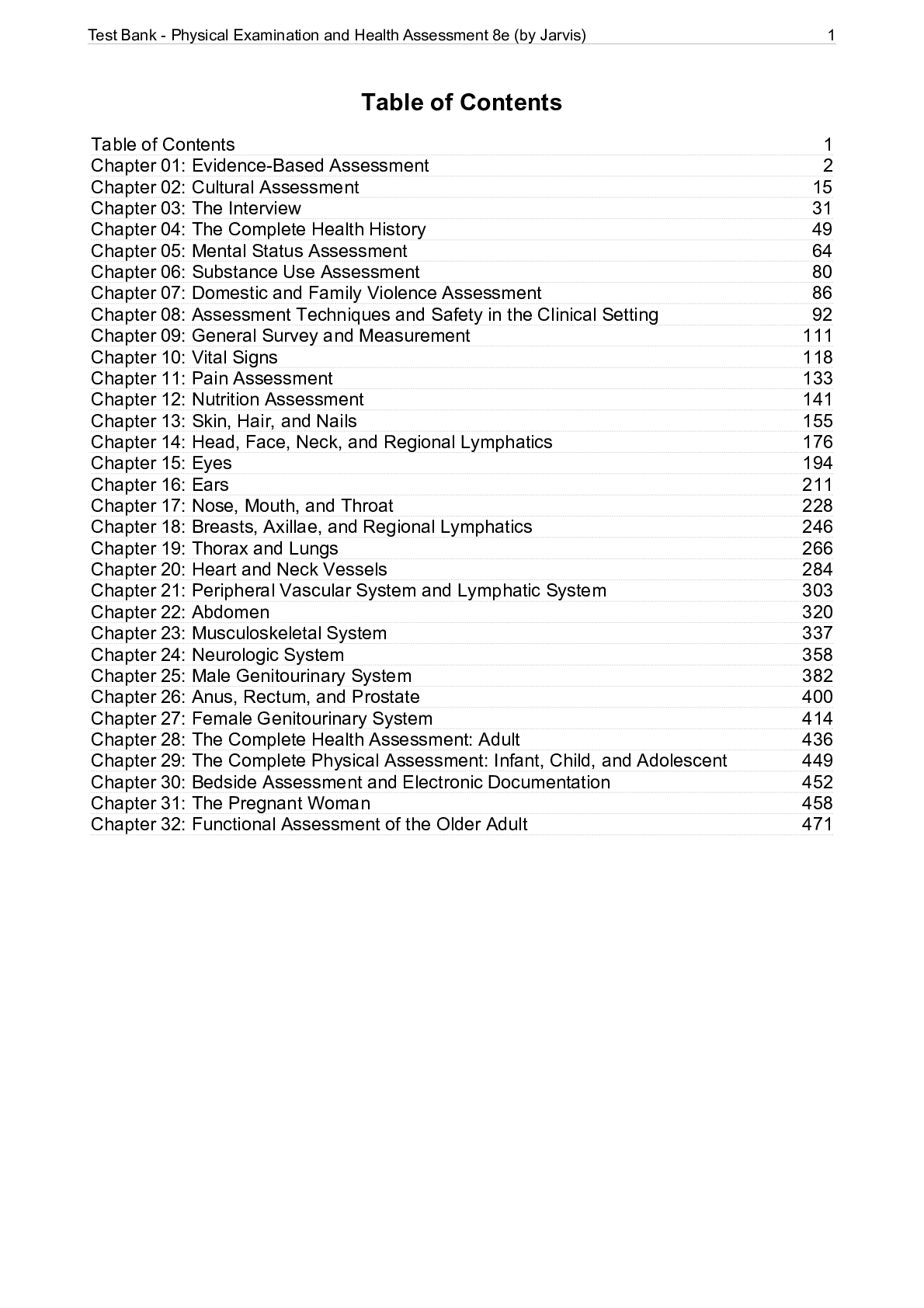
Reviews( 0 )
Document information
Connected school, study & course
About the document
Uploaded On
Jul 22, 2022
Number of pages
476
Written in
Additional information
This document has been written for:
Uploaded
Jul 22, 2022
Downloads
0
Views
36

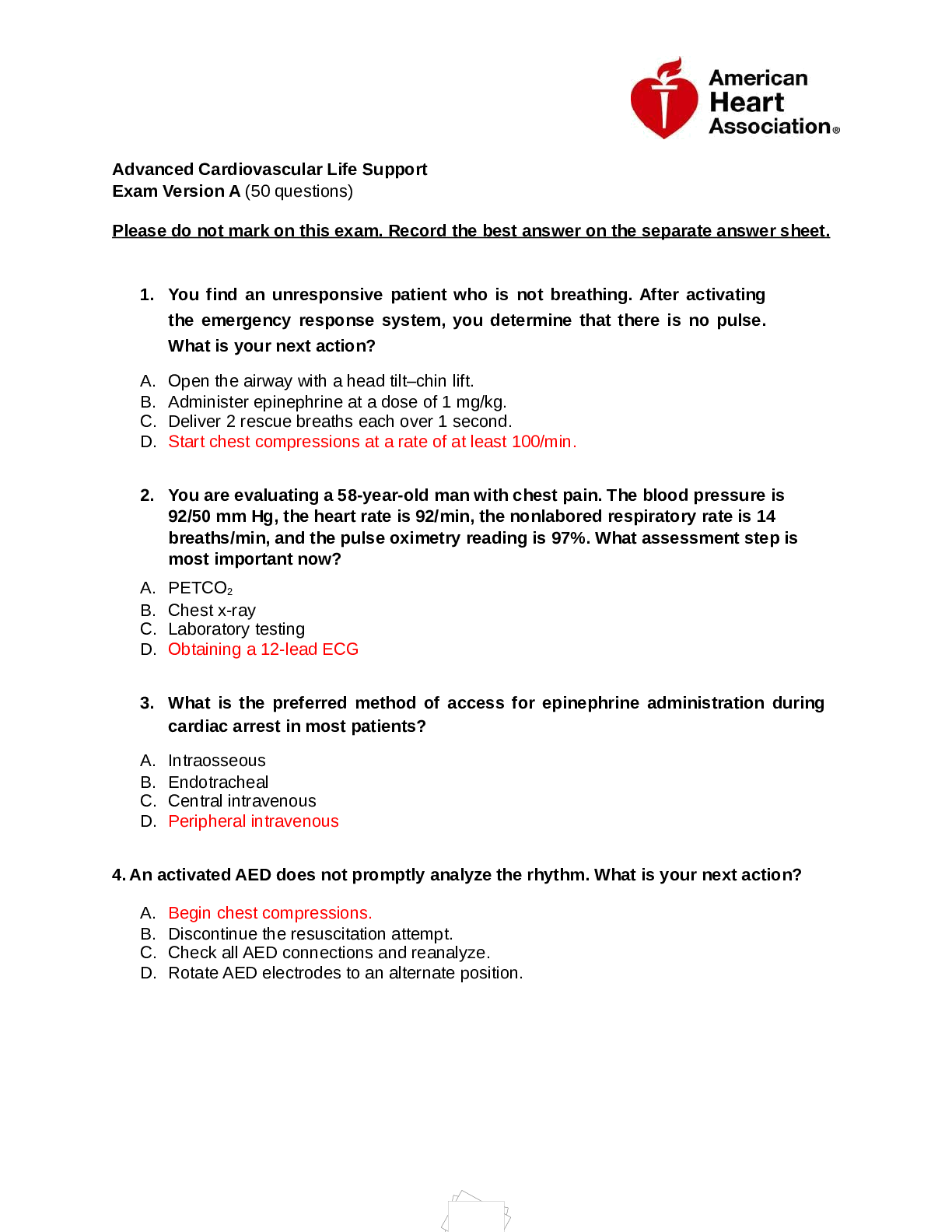
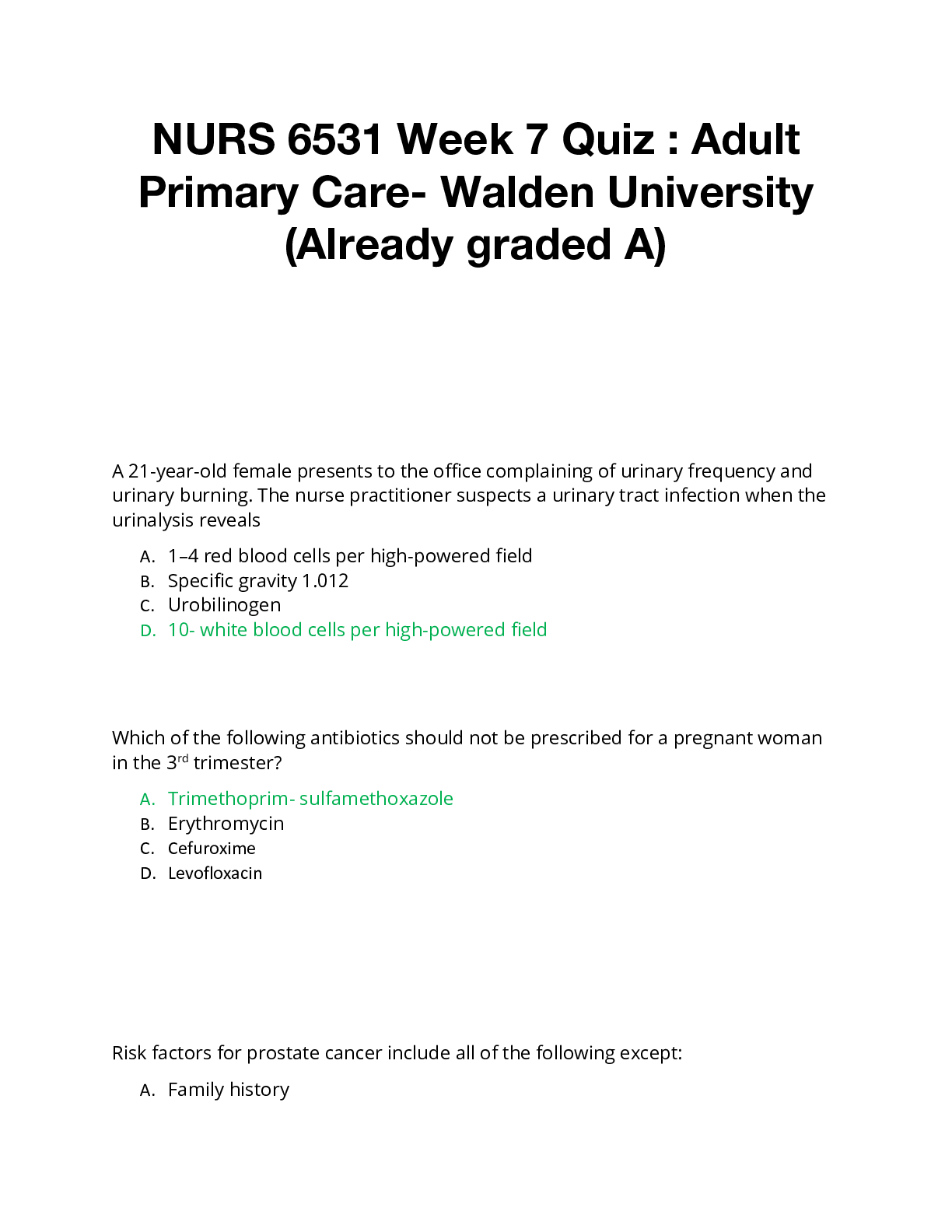
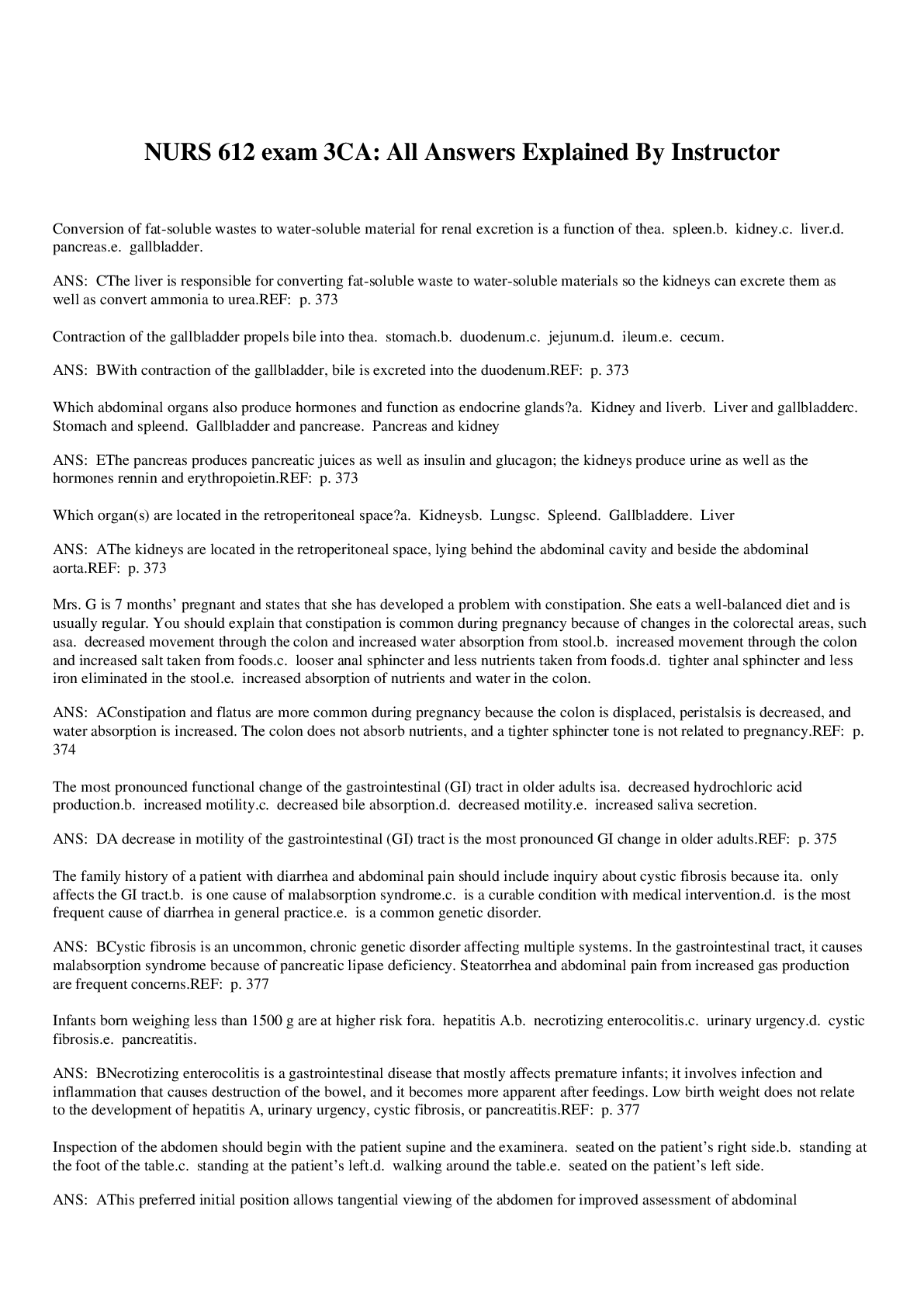
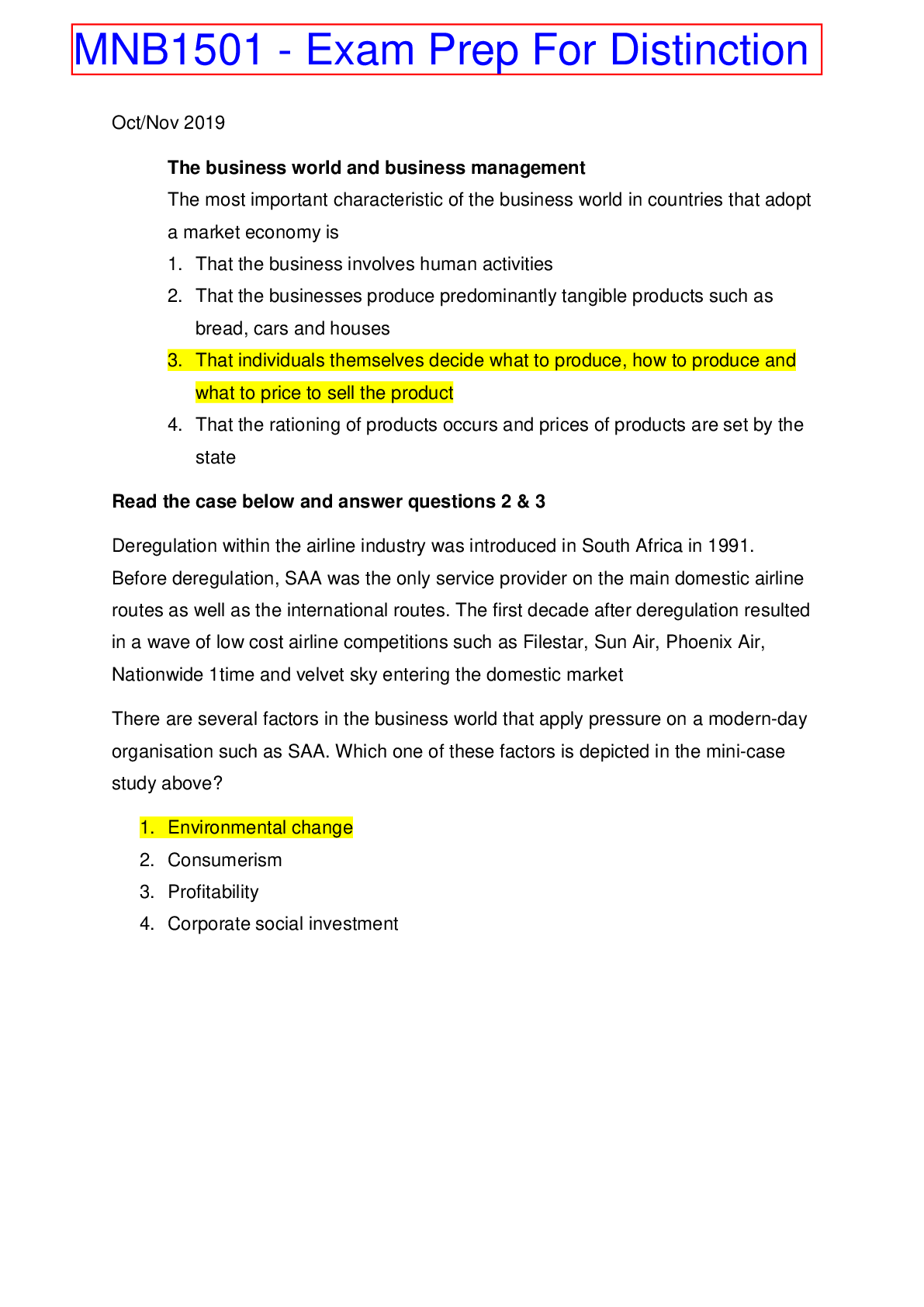
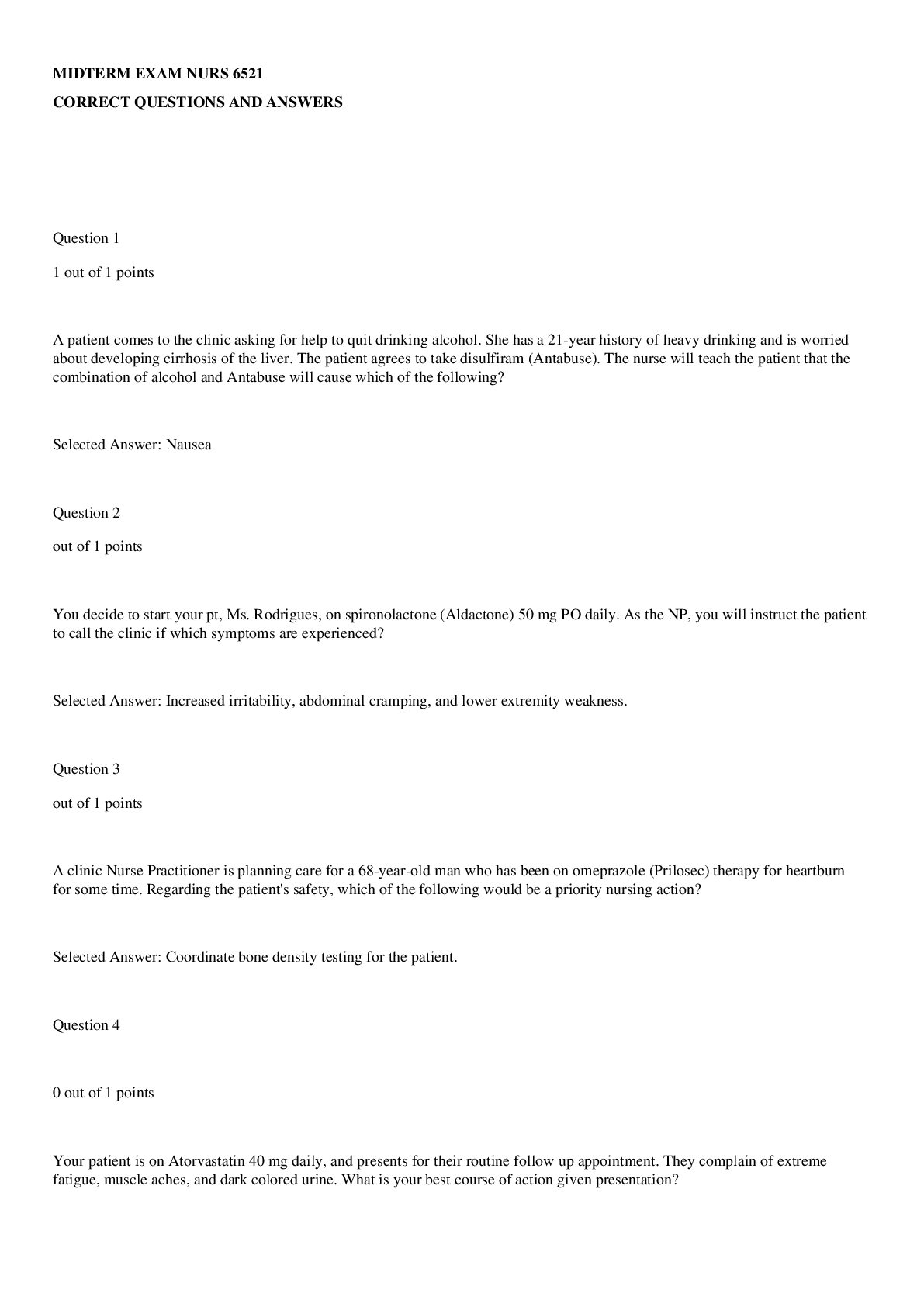

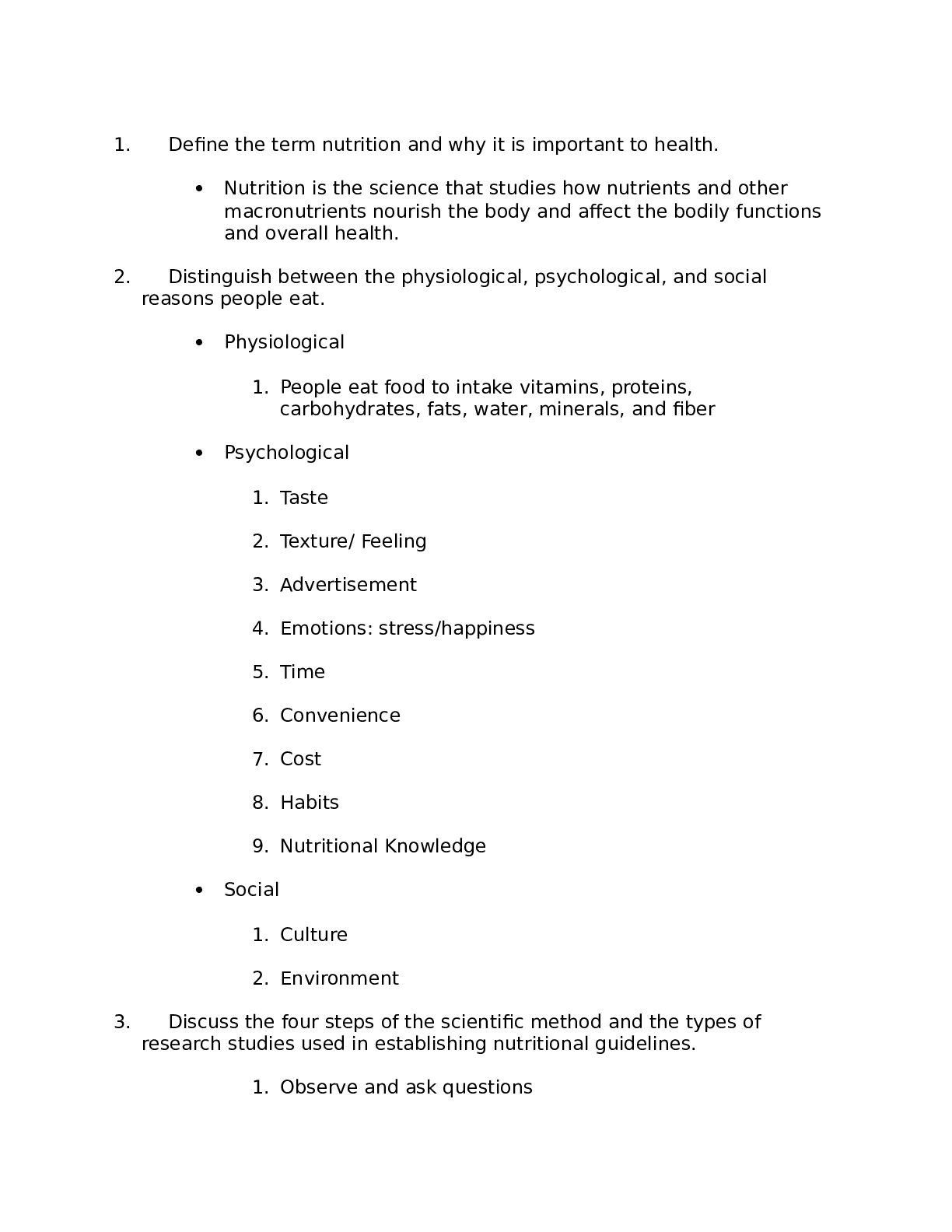
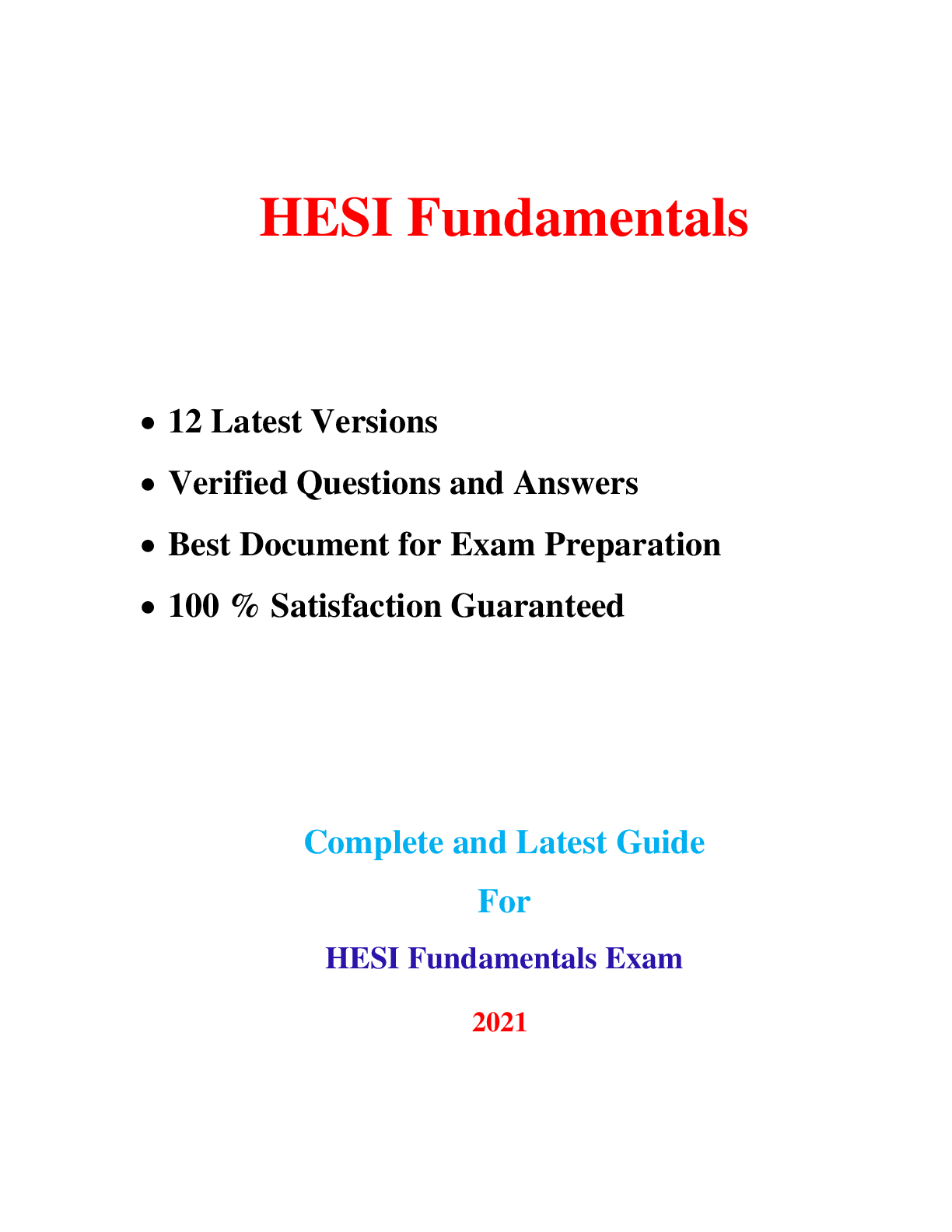
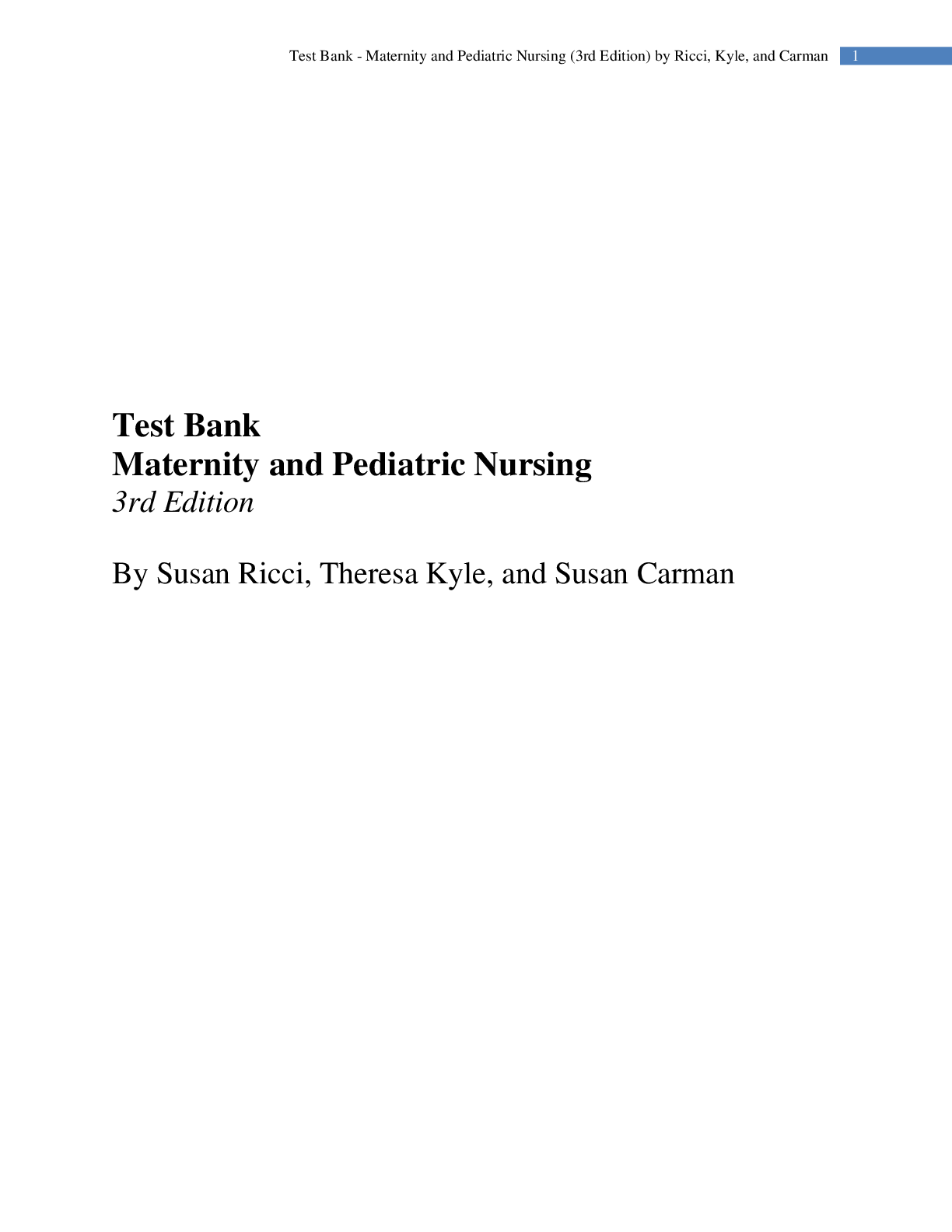

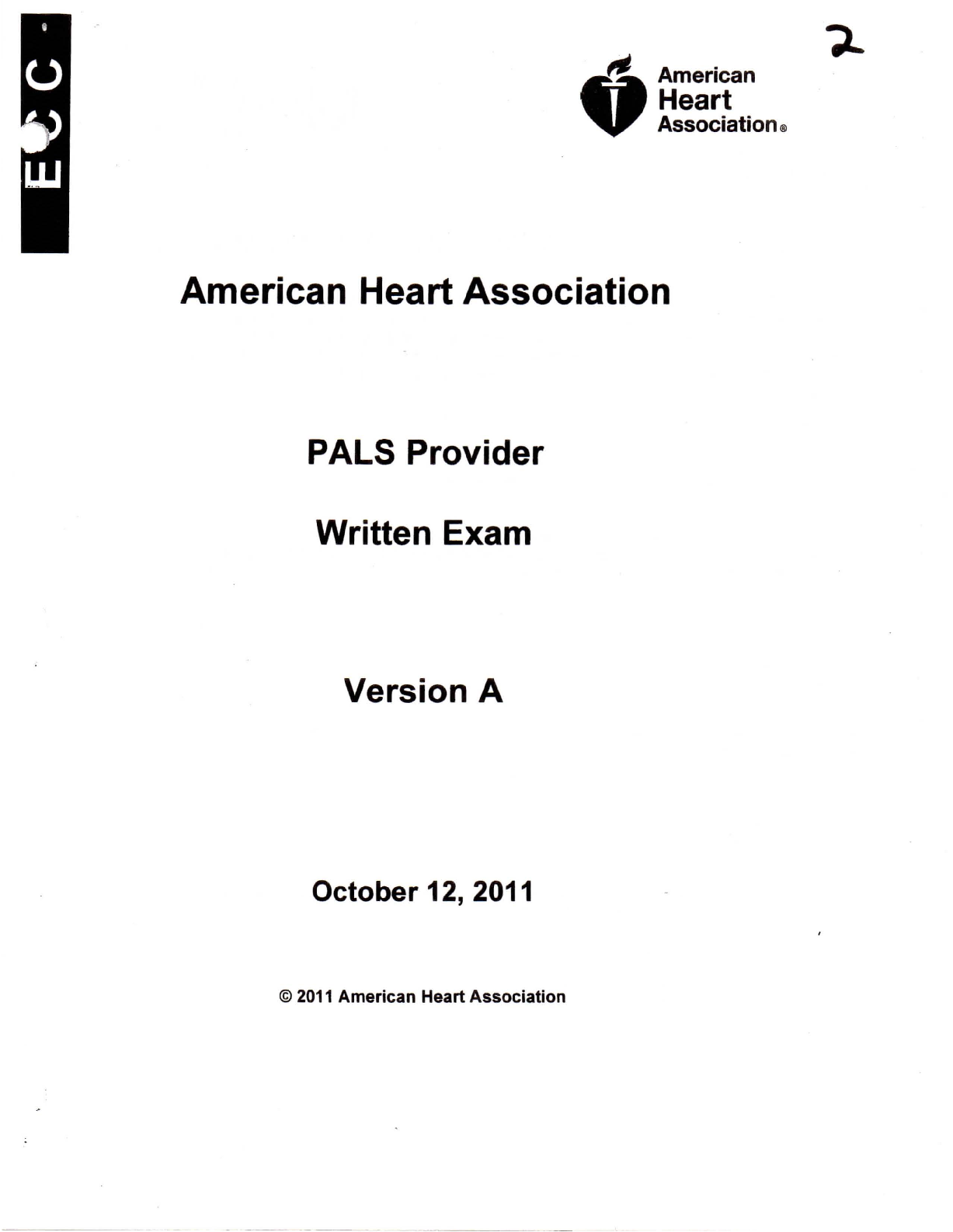
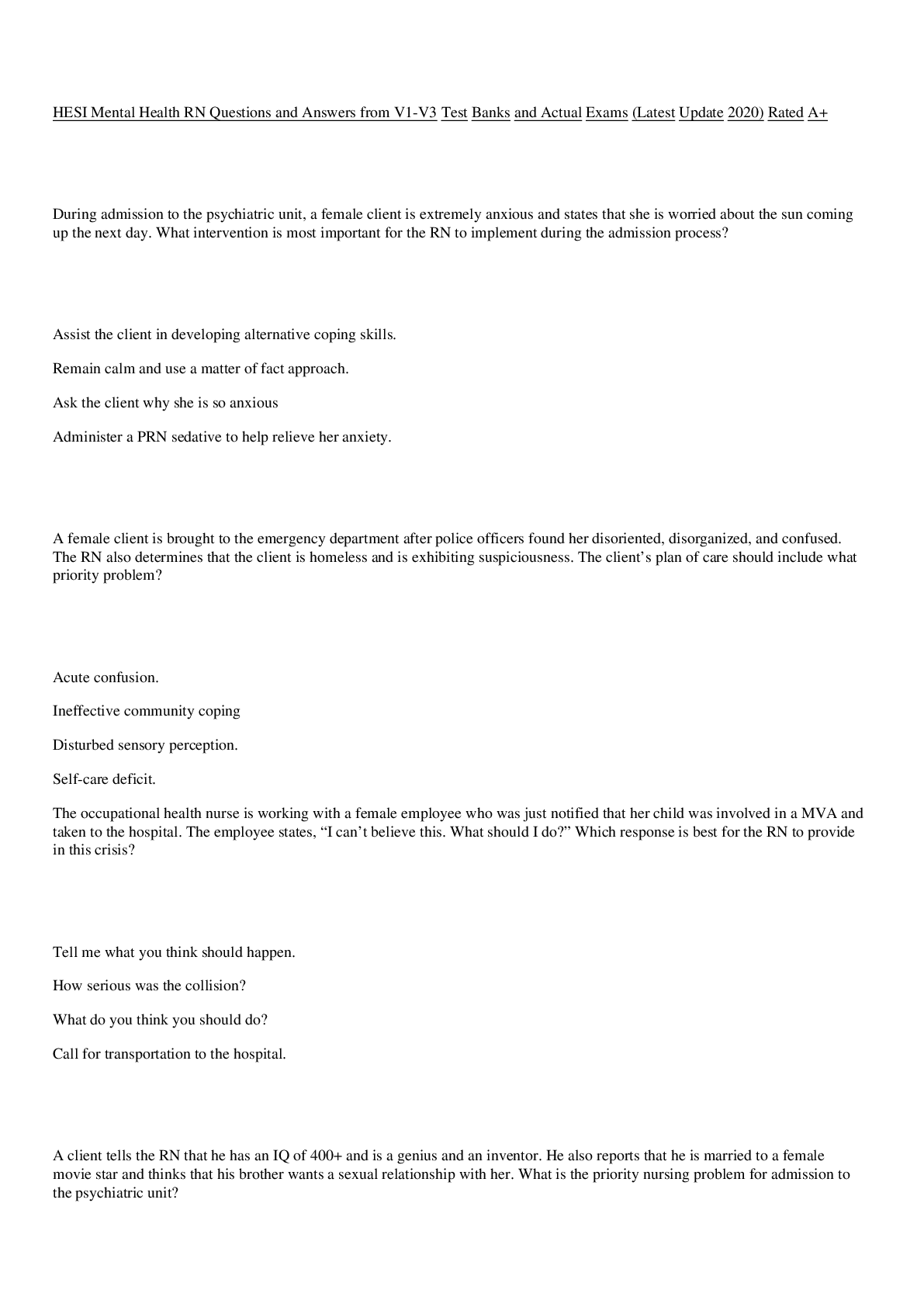
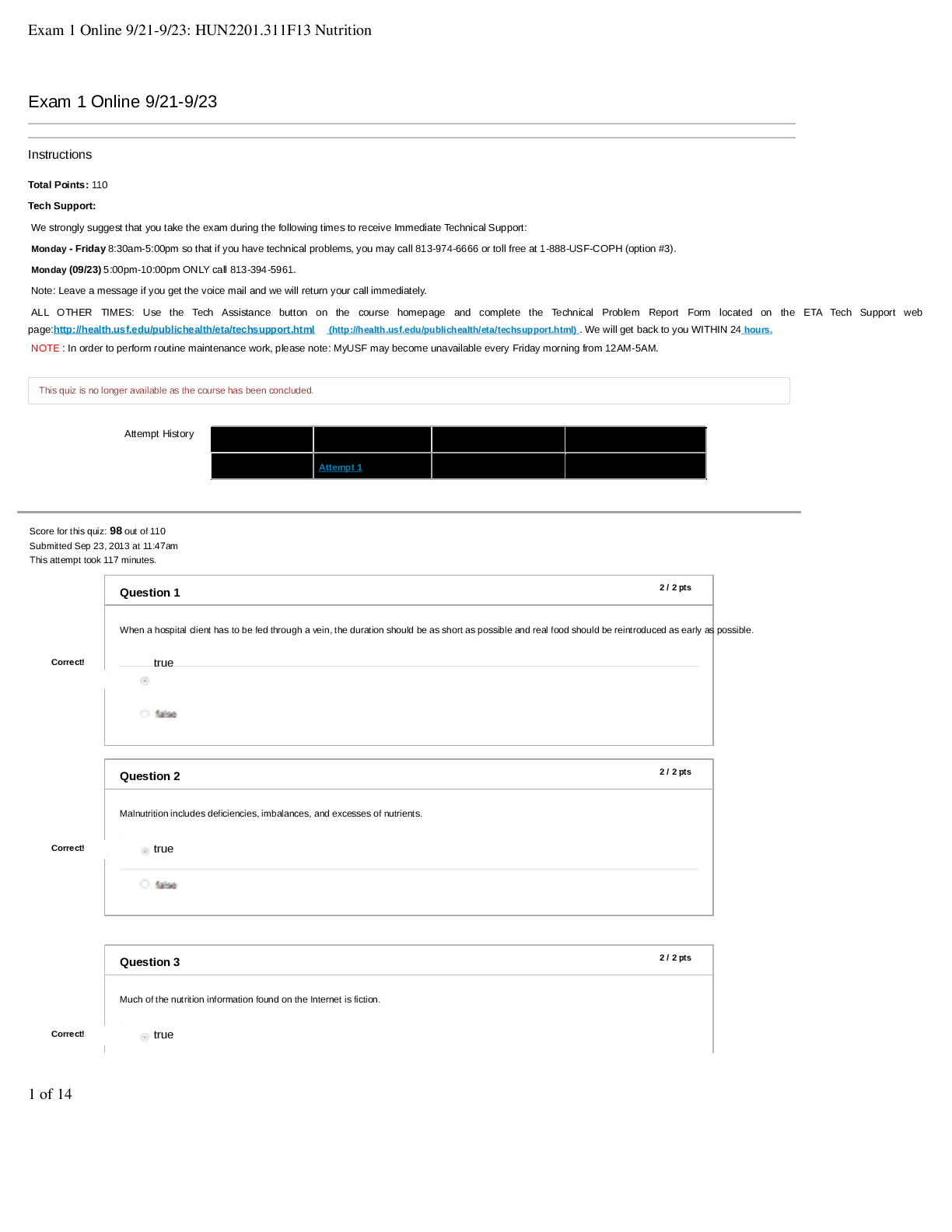



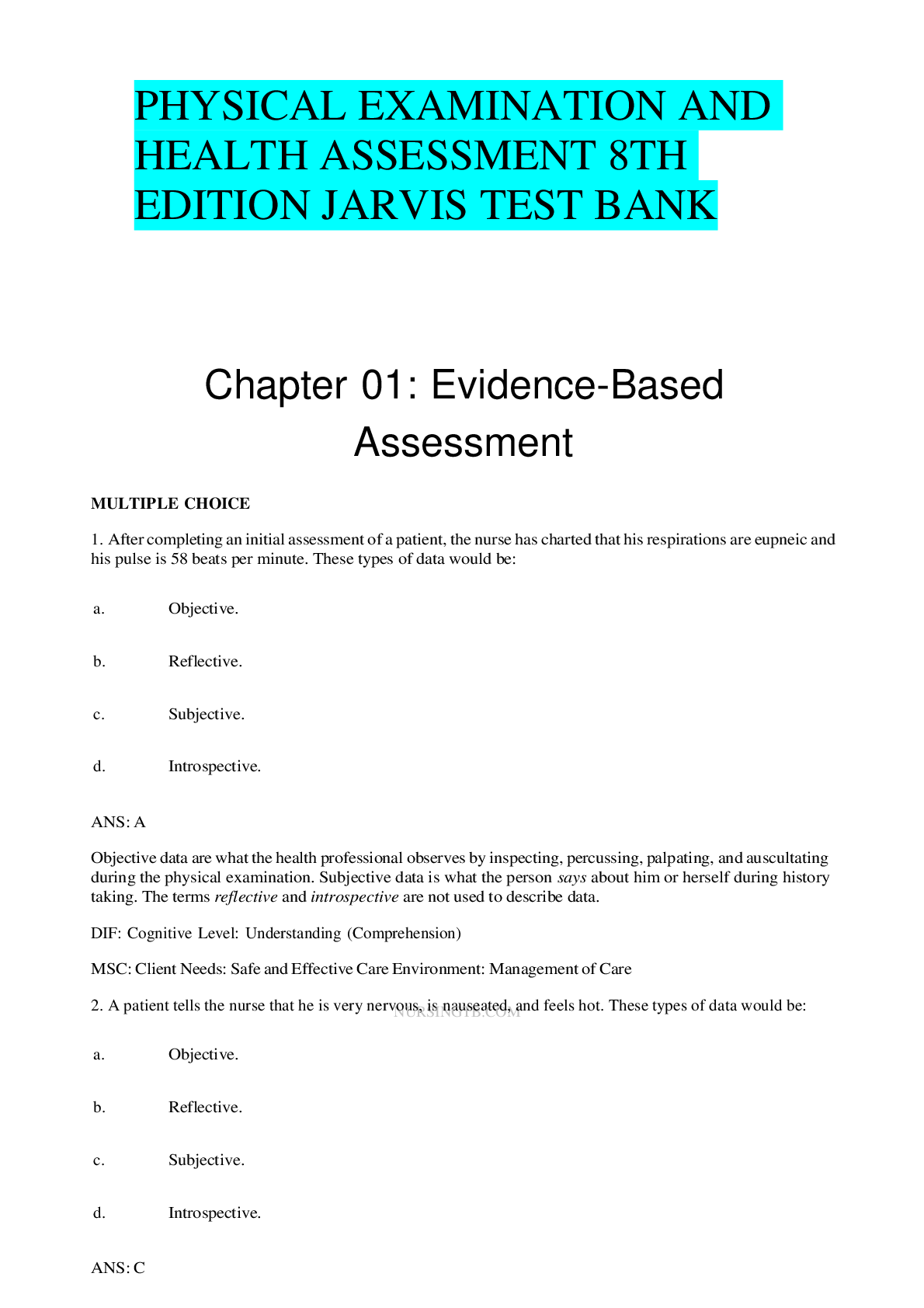
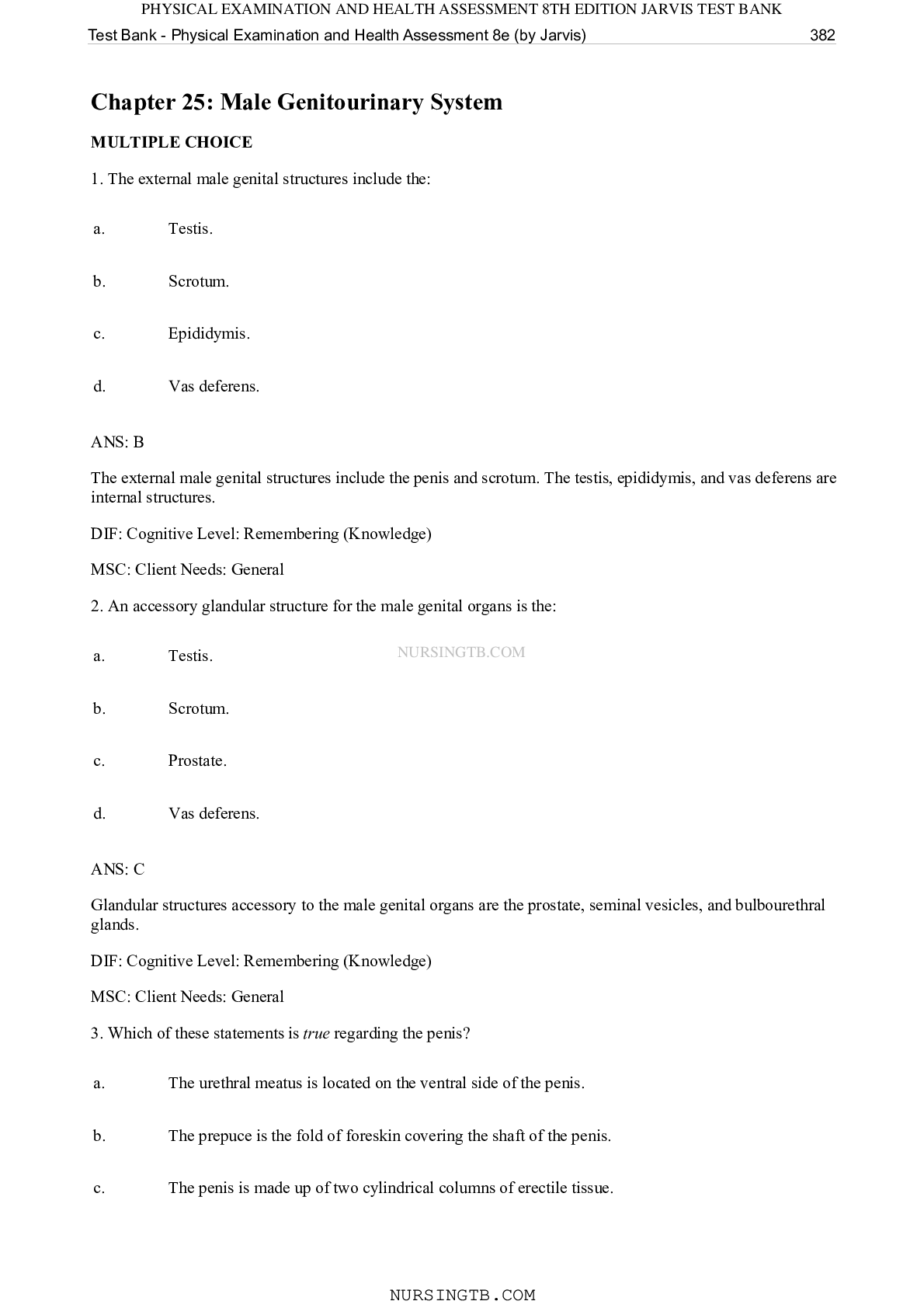
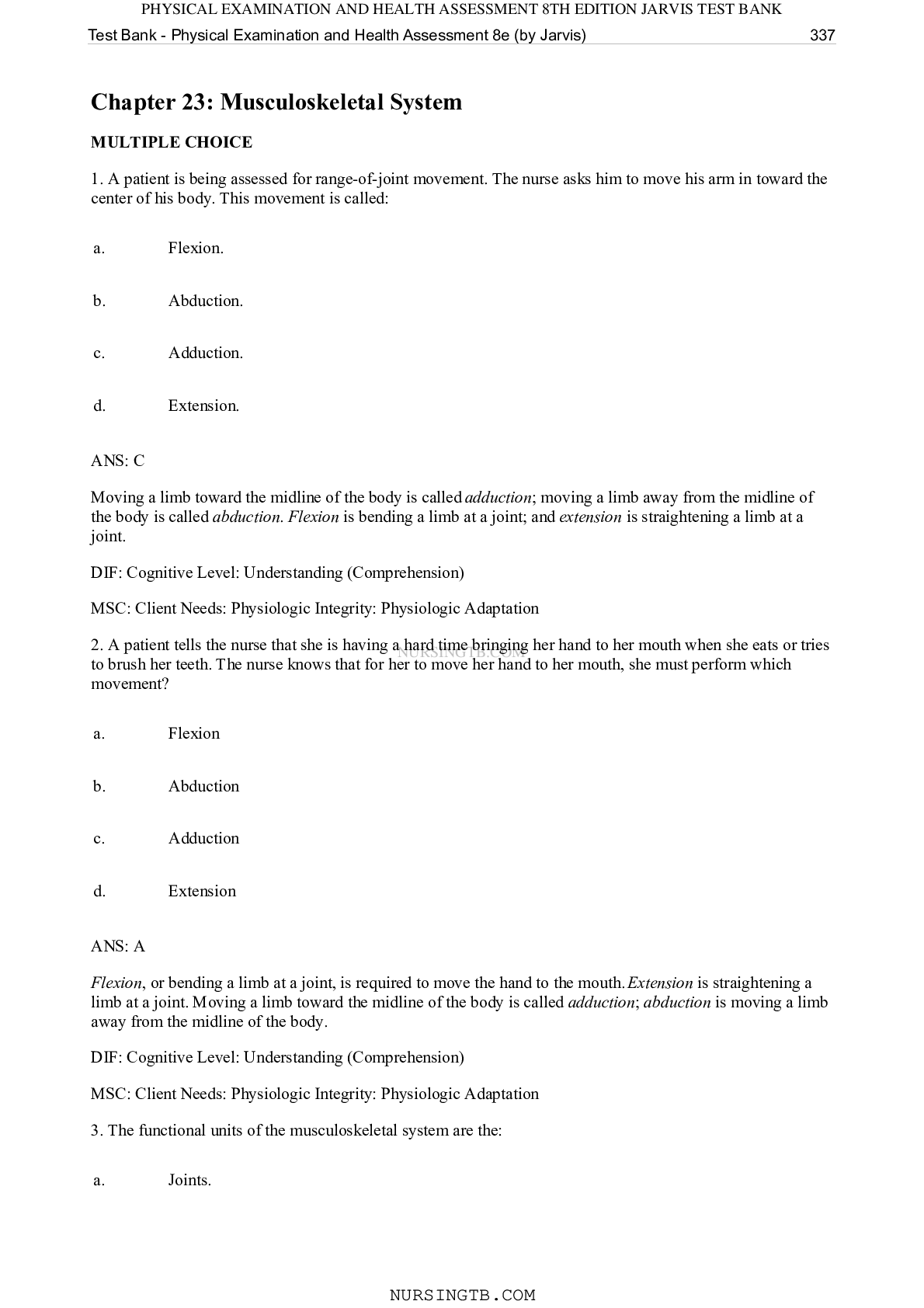
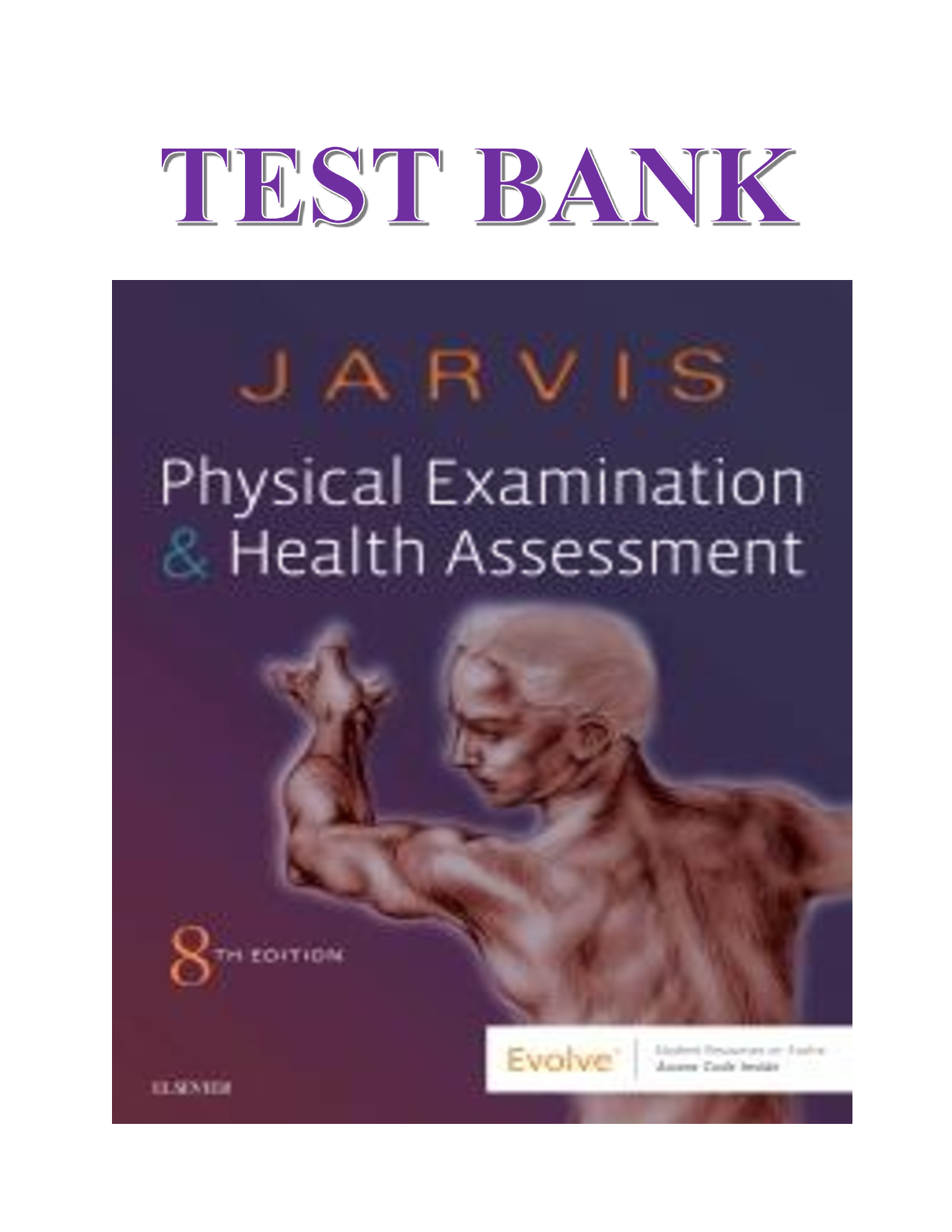
 Correct Study Guide, Download to Score A.png)
